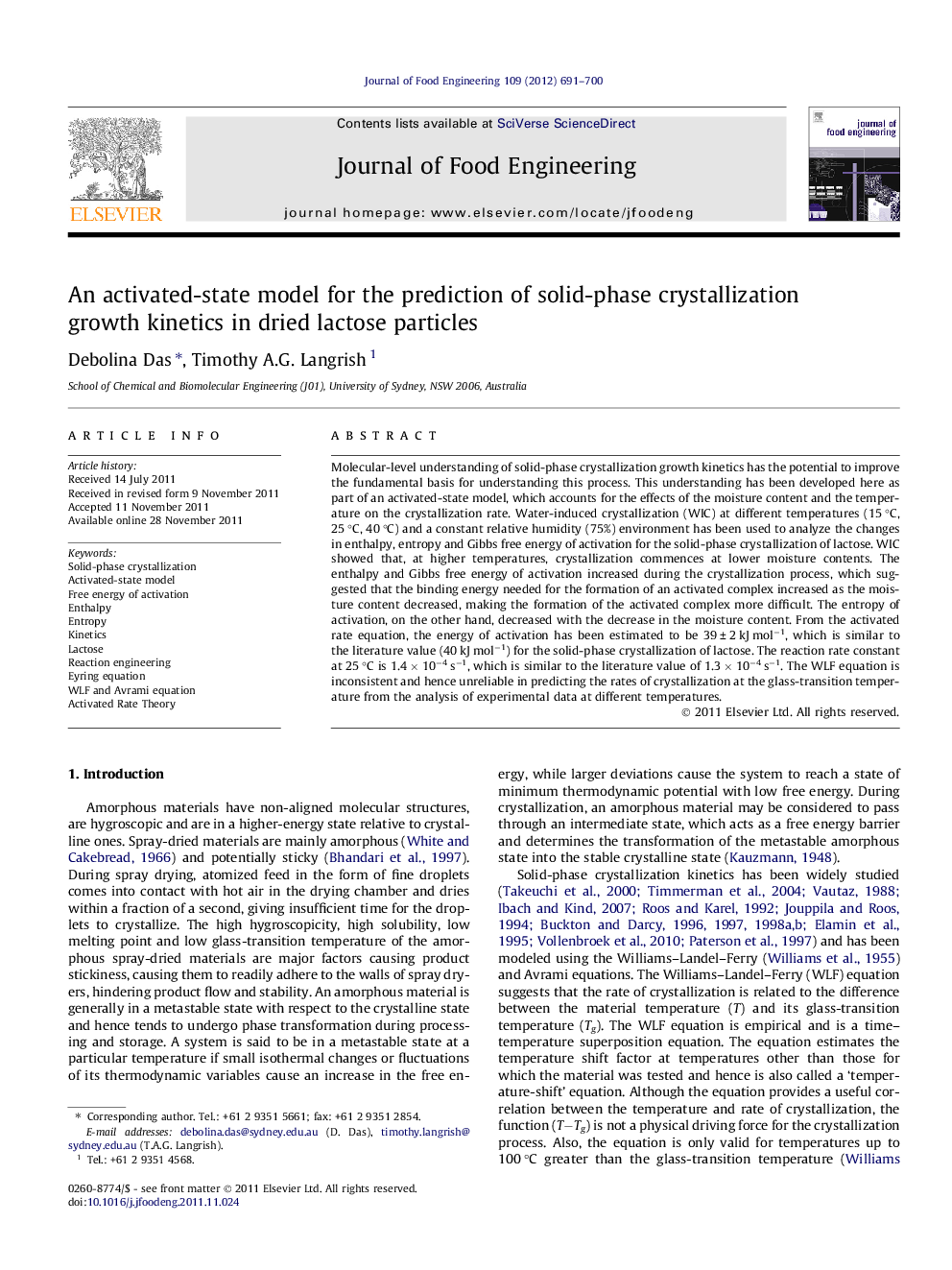| Article ID | Journal | Published Year | Pages | File Type |
|---|---|---|---|---|
| 223722 | Journal of Food Engineering | 2012 | 10 Pages |
Molecular-level understanding of solid-phase crystallization growth kinetics has the potential to improve the fundamental basis for understanding this process. This understanding has been developed here as part of an activated-state model, which accounts for the effects of the moisture content and the temperature on the crystallization rate. Water-induced crystallization (WIC) at different temperatures (15 °C, 25 °C, 40 °C) and a constant relative humidity (75%) environment has been used to analyze the changes in enthalpy, entropy and Gibbs free energy of activation for the solid-phase crystallization of lactose. WIC showed that, at higher temperatures, crystallization commences at lower moisture contents. The enthalpy and Gibbs free energy of activation increased during the crystallization process, which suggested that the binding energy needed for the formation of an activated complex increased as the moisture content decreased, making the formation of the activated complex more difficult. The entropy of activation, on the other hand, decreased with the decrease in the moisture content. From the activated rate equation, the energy of activation has been estimated to be 39 ± 2 kJ mol−1, which is similar to the literature value (40 kJ mol−1) for the solid-phase crystallization of lactose. The reaction rate constant at 25 °C is 1.4 × 10−4 s−1, which is similar to the literature value of 1.3 × 10−4 s−1. The WLF equation is inconsistent and hence unreliable in predicting the rates of crystallization at the glass-transition temperature from the analysis of experimental data at different temperatures.
► This Activated Rate Theory explains the kinetics of crystallization. ► It relates crystallization rate to both temperature and moisture content. ► Accounts for variations in enthalpy, entropy with temperatures, moisture contents. ► Predicted reaction rate constant, activation energy similar to literature value. ► Overcomes limitations of WLF equation in predicting crystallization rate at Tg.
